Review: 8bits4ever’s FDC-600 floppy disk controller
Posted by Javi Lavandeira in Hardware, MSX, Retro, Technology | February 12, 2016Last December as the year was about to end I received 8bits4ever‘s FDC-600 floppy disk controller for MSX computers and Tweeted about it:
Just received this little beauty from Spain! When the stores open I'll go buy a floppy drive to test it. #msx #retro pic.twitter.com/NupL0btBUU
— Javi Lavandeira – #JoSócCDR (@javilm) December 31, 2015
The plan was to go buy a floppy drive and a couple of cables and write a review immediately after the New Year vacation, but I focused on other things for a while.
It has taken a while, but here’s the review.
First of all, what is it?
The FDC-600 is a floppy disk controller. It allows us to plug almost any PC floppy disk drive to an MSX computer and use it as if it was a native MSX drive. The only requirement is that the disk drive must support the DS-DD format (double-sided double-density), or 720KB. Almost all drives do, so we don’t need to worry about what drive to buy.
This cartridge is an excellent way to add floppy disk support to an MSX that didn’t come with a disk drive, or as a way to bypass the original drive when it breaks and it can’t be replaced.
Presentation
The interface arrives in a small cardboard box with a big printed label. Nothing fancy, but more than good enough. Inside the box there’s a bubble-wrap bag containing a Konami-sized cartridge. This point alone makes this interface a very interesting purchase, because other MSX floppy disk controllers have typically been annoyingly bulky. The cart itself comes wrapped in a layer of thin foam to protect it from scratches.
There is no printed manual, but when the order ships we receive a link to download a couple of PDF documents with the instructions.
The cartridge case is made via injection moulding and the plastic is very high quality. It comes with a full color label attached to the front (it doesn’t cover the top nor the back of the cartridge).
Overall, the initial impression is that this is a very professional product. The package could be more elaborated, but that would probably increase the price, which is one of the strong points of this interface. In my personal opinion, the current package is more than adequate.
Components
No surprises here. Besides the interface cartridge, the components required are:
- A standard PC floppy drive that supports DS-DD disks (also known as the 720KB format)
- A standard 34-pin floppy drive cable, without the small plastic key at the top (read below)
- An external power source for the drive
All of these are very easy to obtain. In my case I just went ahead and ordered the components from Amazon to save me a trip to Akihabara. This is what I paid:
- PC floppy disk drive: ¥1,480 (about $13)
- 34-pin ribbon cable: ¥325 (about $3)
- SATA power supply: ¥1,317 (about $12, but I didn’t have to buy it because I already had one lying around)
- SATA to 4-pin power adapter cable: ¥710 (about $6 in Amazon, but I bought this one in Akihabara for around $3)
The total amount for these components (if I had had to buy the power supply) is just ¥3,770 ($33), which is a very reasonable price for the functionality it adds to the computer. Note that original floppy drive interfaces usually sell for around ¥10,000-¥20,000 on Yahoo! Auctions depending on the condition.
I chose to go cheap and buy the cheapest 34-pin cable I could find, but if you want your setup to look cooler then you can spend a couple more dollars and buy a round FDD cable, or even buy/make a hardcore-looking external enclosure for it.
As I mentioned before, it’s important to make sure that the 34-pin cable connector doesn’t have the small plastic tab at the top:
If for any reason you can’t find a cable without the plastic tab then you can always remove it with a small knife (be careful not to cut yourself!) or just sandpaper it away.
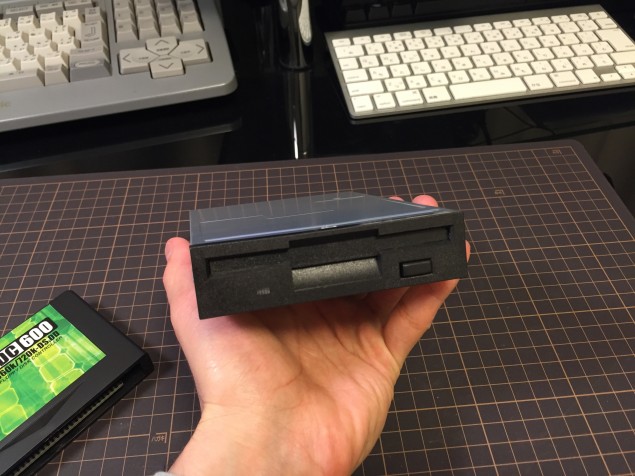
Just a normal 3.5″ floppy disk drive…
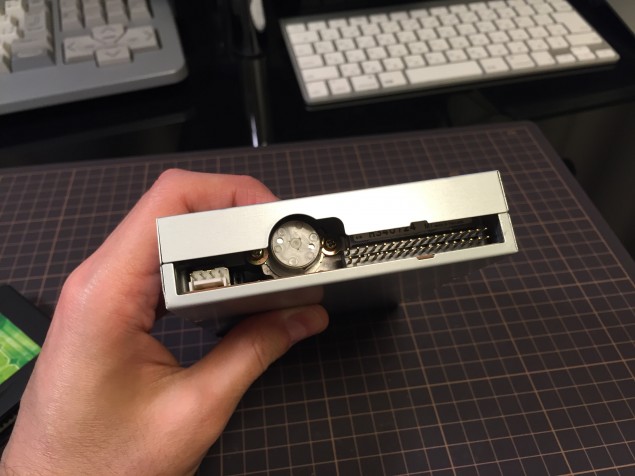
…with a standard 34-pin connector and 4-pin power cable.
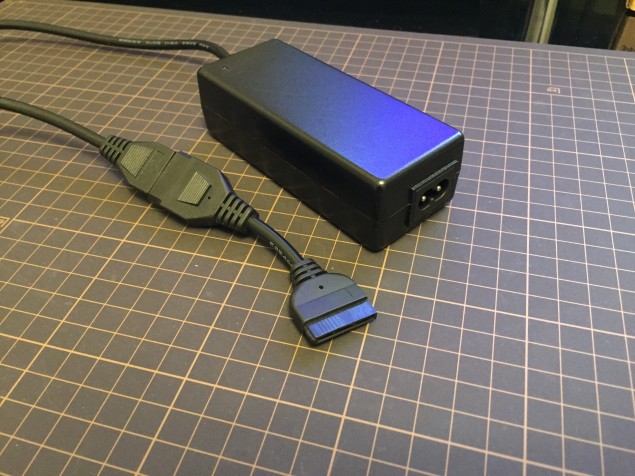
SATA power adapter
Setup
Not much to say here because it is dead simple. The cartridge has a 34-pin connector at the top in order to connect the drive. The only thing to take into account is the orientation of the ribbon cable. Make sure that it is connected like this:
- The twisted side of the 34-pin cable connects to the disk drive, with the colored wire to the left (when looking at the back of the drive)
- The other side of the cable connects to the cartridge also with the colored wire on the left
Just make sure that the drive is also connected to power, and that’s it. As long as the ribbon cable is plugged correctly then the drive will work as if it was a native MSX floppy drive.
Compatibility
The FDC-600 should work with any MSX computer, from the most basic MSX(1) machine to the MSX turbo R machines. I tested it with the following computers:
- Casio MX-10 (one of the most basic MSX1 computers, with only 16KB of RAM)
- Panasonic FS-A1 (MSX2, 64KB of RAM)
- Panasonic FS-A1GT (MSX turbo R, with and without the MegaFlashROM SCC+ SD cartridge)
In order to use the MSX-DOS operating system we need at least 64KB of RAM, and MSX-DOS2 requires at least an MSX2 computer with at least 128KB of RAM. These requirements are the operating system’s, not the floppy disk drive interface. The interface includes its own disk ROM and works just fine from MSX-BASIC with only 16KB of RAM (though there’s not much we can do in a computer with such a small amount of memory).
Loading an MSX-BASIC file from disk on the MX-10
One thing I noticed during my tests is that the drive doesn’t work properly in 720KB mode unless I covered the high-density hole in the floppy disks with a sticker. I never needed to do this when using native MSX drives, but I guess it makes sense when using a PC drive.
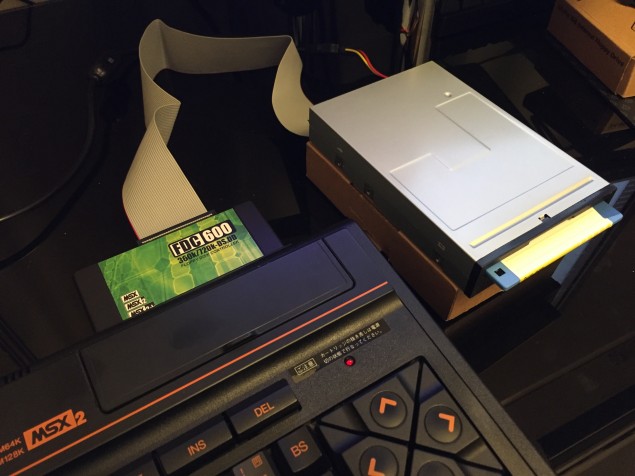
Using the FDC-600 in the FS-A1’s back slot, cartridge and cable get out of the way (click to enlarge)
A very interesting thing is that this cartridge supports 5.25″ drives. Yes, you can actually go to eBay and buy a 5.25″ floppy disk drive and cable, plug it to your MSX computer, and have it work out of the box without any tinkering! The MSX-BASIC CALL FORMAT dialog gives us this option even when there’s no 5.25″ drive connected:
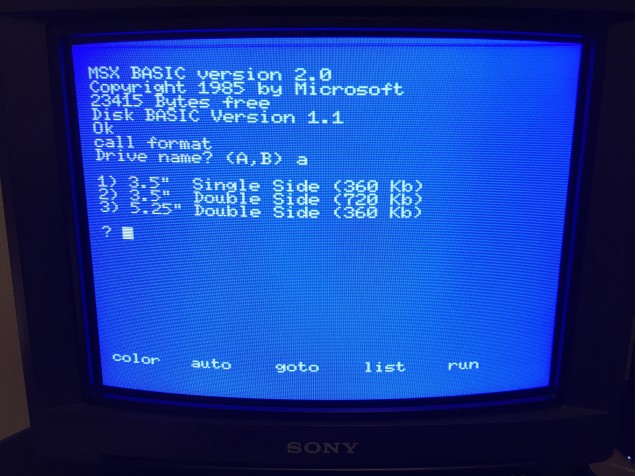
According to the manufacturer, this interface works also with floppy drive emulators such as the HxC and Gotek drives (it makes sense, since these are designed to emulate a standard drive). How’s that for compatibility?
I almost forgot to mention that it also supports two drives simultaneously. We can buy two floppy drives and a dual drive cable and have a two-drive setup on any MSX computer. This should work with any combination: two 3.5″ drives, two 5.25″ drives, or one of each.
Performance
It feels quite fast for a floppy drive (definitely not painfully slow as the floppy disk drive in the Sony HB-F700). It takes a bit over a minute to format a 720KB disk, and games load reasonably fast. No surprises here.
Formatting a floppy on the FS-A1
Listing the files on a disk and booting a game
How to buy
The FDC-600 can be ordered from the 8bits4ever product page. The price is 70 euro with worldwide shipping included, so it’s a very good price for such a useful piece of hardware. It’s also built to order, so when you buy one they’ll assemble it and ship it to you.
Overall impression
This interface is very simple to set up, professionally built and works perfectly. It is also very reasonably priced.
If you have an MSX without a floppy drive then this is a no brainer. Go get one and make your computer much more useful.

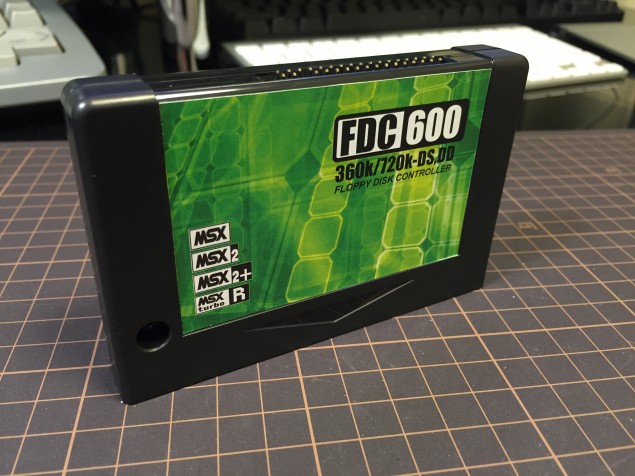
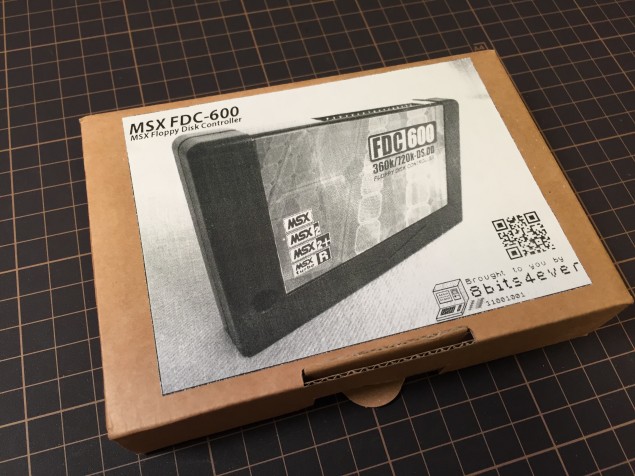
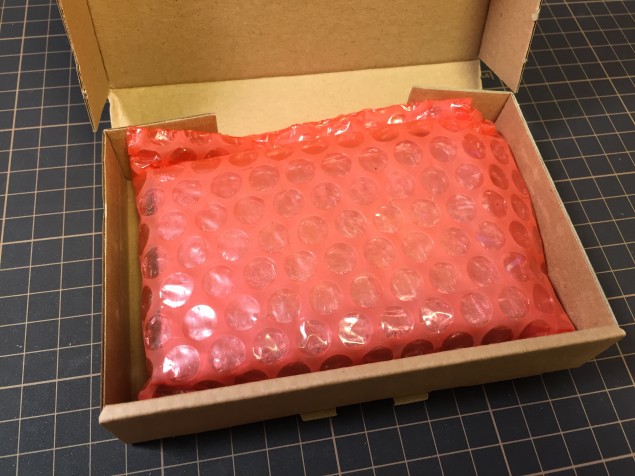
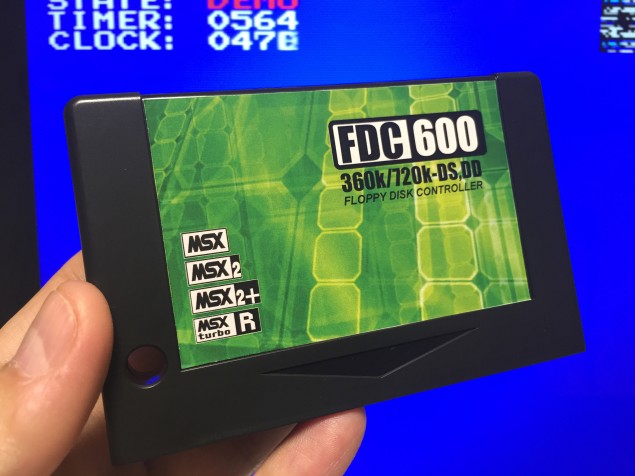
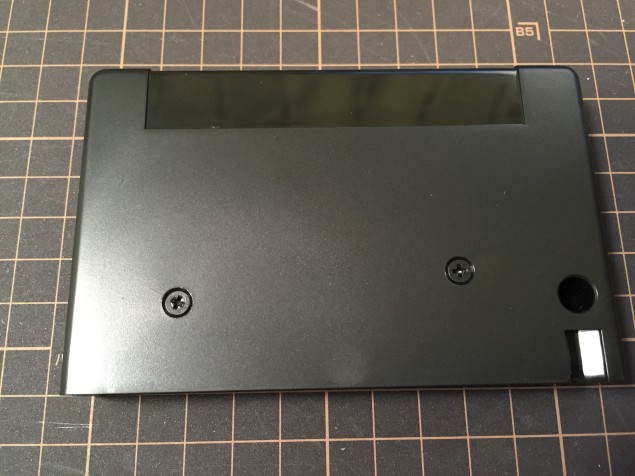
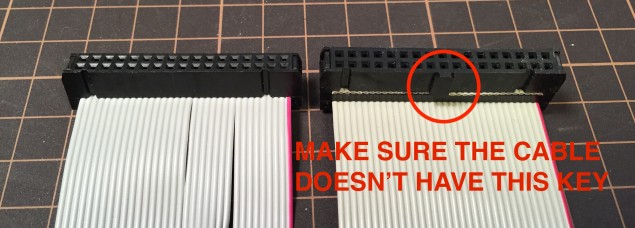
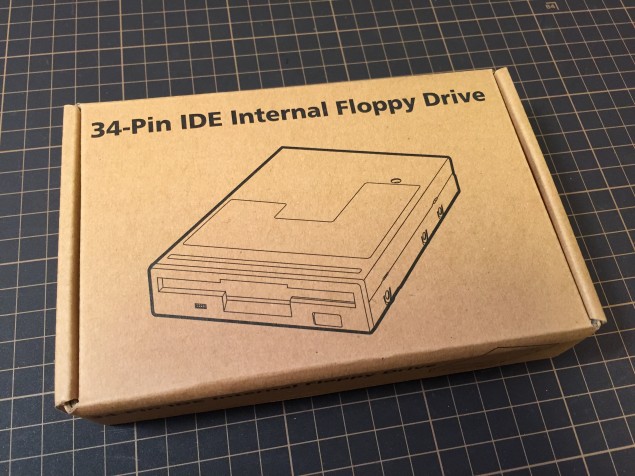
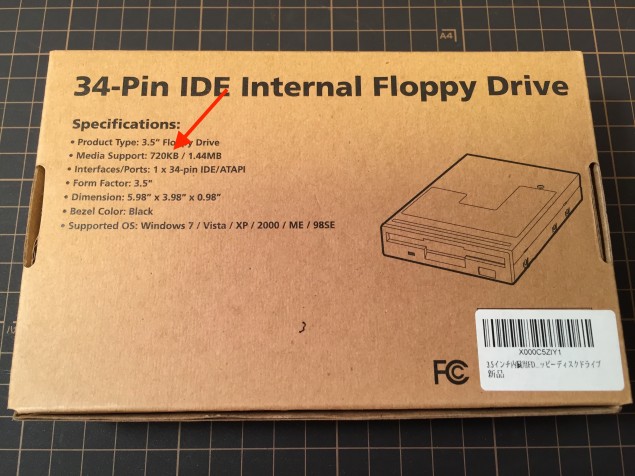
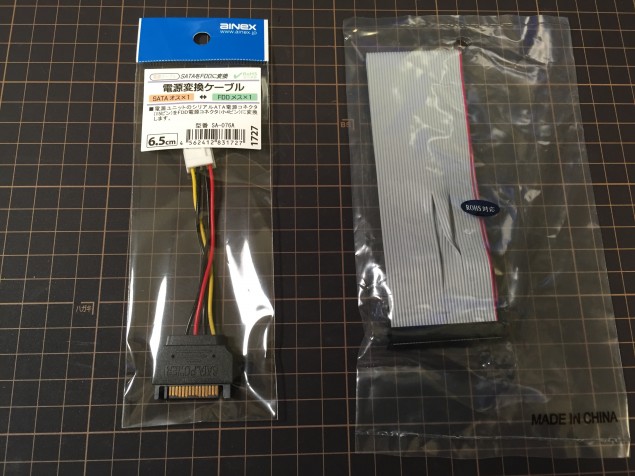
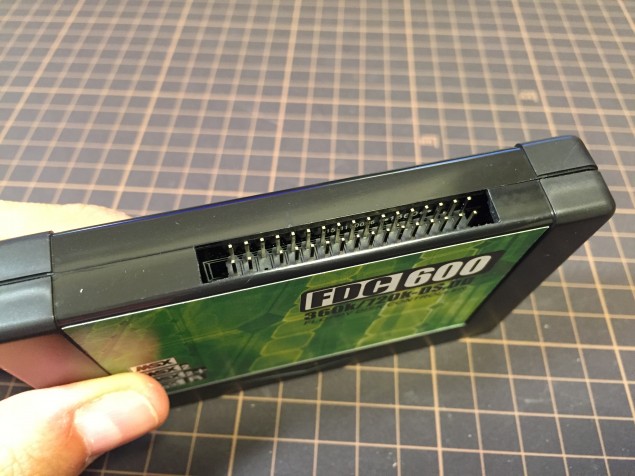
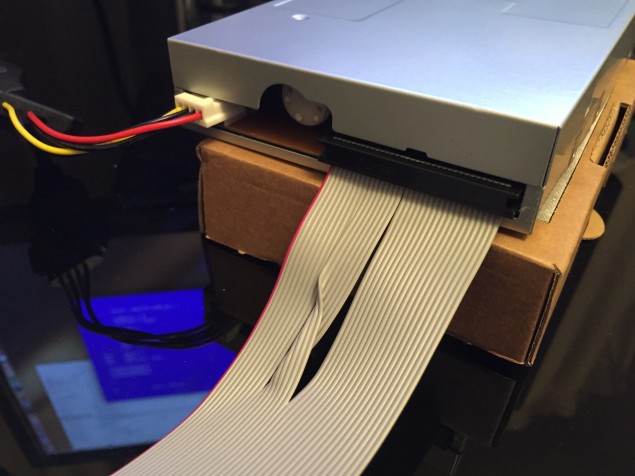
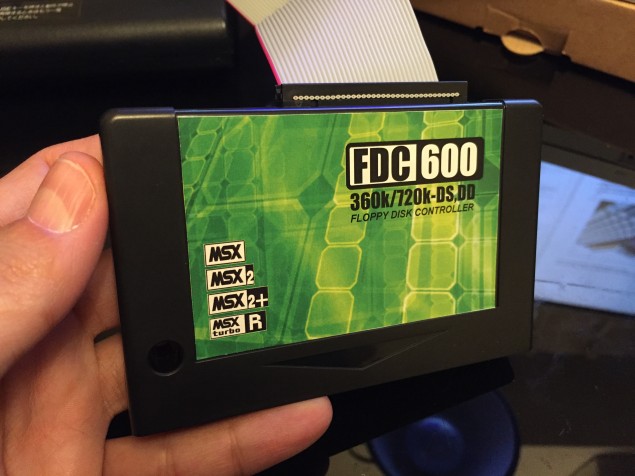
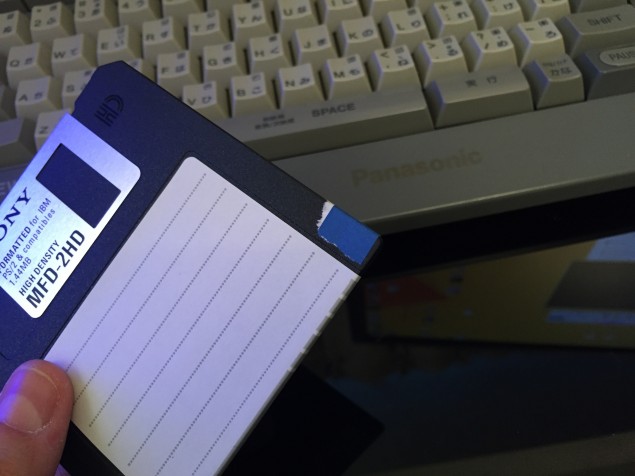
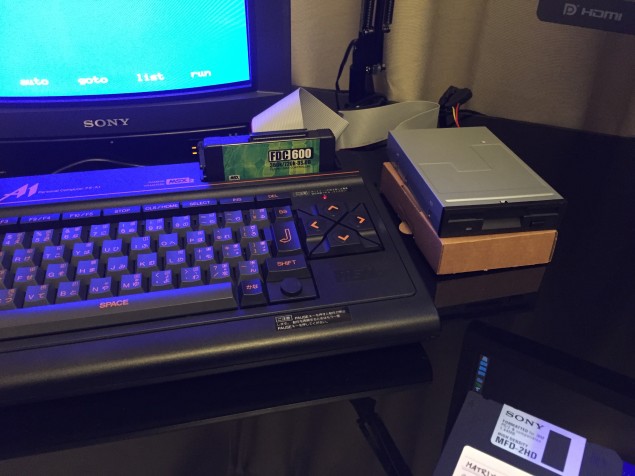
65 euros?
Yo la compré por 35€ exactamente la misma,pero sin carcasa e incluia el cable. No creo que una carcasa cueste 30 euros jejeje
De todos modos hacersela uno mismo cuesta unos 10 euros,aunque dado que no dispongo de experiencia con el soldador tuve que pedirla hecha.Toda la informacion y archivos necesarios para hacerla esta en la red,facilmente localizable.
65 euros con gastos de envío incluidos. La carcasa no vale 30 euros, pero como mínimo sí que vale 6. Añade a esto la mano de obra para montar la placa, la etiqueta, etc. Si tienes los conocimientos de hardware necesarios y te la puedes montar tú mismo entonces genial, pero yo no me veo capaz de montar esta placa, aunque tuviera las instrucciones delante. :-)
Lo caro no es el “plástico” de la Carcasa sino el trabajo previo que hay hasta llegar al “plástico”.
Pregunta tú a Guillian lo que cuesta hacer el molde previo de Silicone y demás.
Es igual que los coches: el material cuesta “cuatro duros” pero todo lo que lleva de I+D es evidentemente lo que lo encarece.
Yo tengo esa controladora barata que mencionas.
Sí, ambas controladoras están basadas en el mismo diseño, funcionalmente son idénticas, pero hay una GRAN diferencia:
La controladora barata, tiene toooda la circuitería en la parte trasera de la placa, mientras que la que nos muestra Javi, tiene la circuitería delante.
¿Qué supone esto?
– Primero: Será imposible que puedas meter la placa barata en una carcasa.
– Segundo: Habrá ordenadores donde no seras capaz de meter la controladora porque el espacio para el cartucho es muy estrecho o porque la tapa del slot lleva muelle.
Ambas son buenas tarjetas y ambas tienen un precio muy correcto a lo que ofrecen. La diferencia está en el acabado, y ya te digo que eso no es nada trivial :)
Javi, un consejo para la disketera: yo lo que hago es comprar una caja externa usb para discos duros de 3 1/2, adapto la tapa frontal, quito la trasera, y meto la disketera dentro. Con eso tienes una disketera muy maja, protegida dentro de una carcasa y con fuente de alimentación. Además, las cajas usb suelen tener un interruptor para encender/apagar el dispositivo.
Javi, cuando pueda te paso una foto!
¡Perdona por haber tardado tanto en aprobar tu mensaje! Llevo unas semanas trabajando en otro proyecto y acabo de ver tu mensaje ahora.
Sí, pásame cuando puedas las fotos de la caja para la disquetera, que me interesa hacer lo mismo. Tener la unidad desnuda encima de la mesa queda muy feo. ;-)
Pingback: MSX FDC-600 floppy disk controller review | Vintage is the New Old
This interface is a clone of the famous Talent TDC-600. It was an Argentinian disk interface that used a PC FDC controller.
In theory, if some good soul could enhance the BIOS drivers, these interfaces should be able to read/write 1.44MB disks.
There’s another clone made by PalMal that is being sold for around €22 plus shipping:
http://produto.mercadolivre.com.br/MLB-733306529-interface-floppy-para-msx-expert-hotbit-e-importados-_JM
That’s a good point. Maybe we can ask Nestor about that. :-)
There’s a catch with the 1.44MB support: there’s no way to use these disks with their standard formatting in MSX-DOS 1.
Why is that? Well, turns out that MSX-DOS 1 loads the entire FAT in RAM every time a disk is accessed. It allocates exactly 1.5K of RAM for this, so that if the disk has more thank 3 sectors per FAT, it just crashes. And this is the case for 1.44MB disks.
A solution would be to use a custom format with 3 sectors per FAT and a bigger cluster size. These disks should be still readable by non-MSX computers.
It seems like a good compromise. And once a driver was written to support 1.44MB disks, an enhanced version of the interface, with the Nextor kernel embedded, could be easily designed.
Hombre esto es como todo, si sabes hacerlo tu mismo siempre vas a ahorrar, pero no se puede ser maestro en todo :-). Hace años hubiera matado por una de estas (ains mi F9S nunca tuvo disquetera), pero a día de hoy gracias a dios un MSX2 con disquetera está al alcance de casi todos. Eso sí, el que siga tirando de su F9S ya puede ponerle una :-).
great rev. i like this hardware.